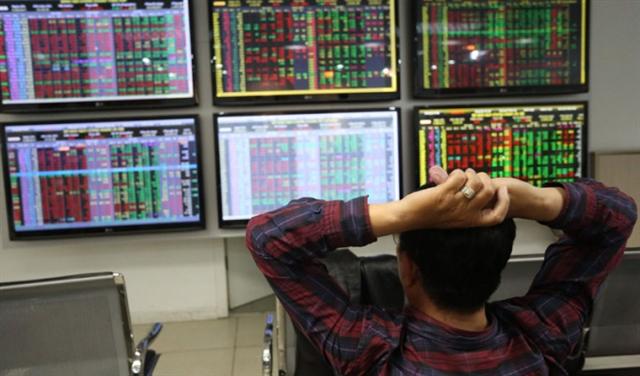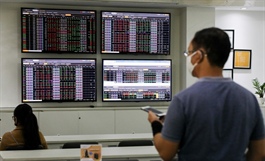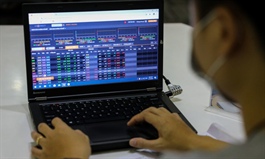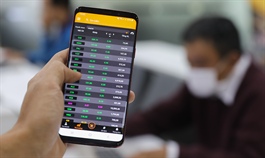Vn-Index declines as HoSE’s new system starts operation
Vn-Index declines as HoSE’s new system starts operation
The trading system went smoothly without any crash as liquidity reached VND28 trillion (US$1.22 billion) at the close, slightly up from previous sessions.
At the close today [July 5] when the new transaction system for the Ho Chi Minh City Stock Exchange (HoSE) is officially launched, the benchmark Vn-Index declined by 9.14 points or 0.64% to 1.411,13 as stocks succumbed to selling pressure.

Investor at a securities company in Hanoi. Photo: The Hanoi Times
|
The new transaction system, provided by IT firm FPT, is designed to process three to five million orders per session, which is expected to be able to address the current overload issue on the previous system.
For the past six months, a surge of transaction orders above the limit of 900,000 transactions per day has caused frequent crashes on HoSE’s system.
According to the HoSE, there would be no significant changes to the transaction method, with the maximum fluctuation of stock prices at +/-7% compared to the reference prices.
While investors noted trading activities went smoothly without any crash, there was still a minor issue, such as a delay in updating transaction volume and prices at real-time monitors in securities firms during the beginning of the morning session.
Overall, liquidity in today’s session reached VND28 trillion (US$1.22 billion), slightly up from previous sessions but remained lower compared to the record high of over VND32 trillion (US$1.4 billion) in June.
Foreign investors continued to keep their net-selling position by a net amount of VND77 billion (US$3.35 million).
Assessing the new trading system, Tan Viet Securities company expected an upward trend for the Vn-Index in the mid-and long-term as market participants get a better understanding of the system.
“Vn-Index could fall into a short-correction phase like today session, but it could gradually go up to 1,438-1,445 in short-term,” noted Tan Viet.
Meanwhile, VPS Securities Company said a new system with greater capabilities would ease investors’ concern over overload issues and help increase market liquidity.
“Unless unexpected things happen, strong business results from public firms in the second quarter and the presence of new system would push the liquidity to around the record level in early June,” stated the VPS.

























